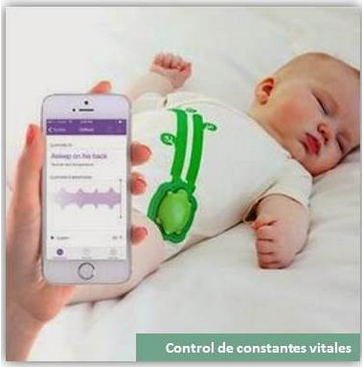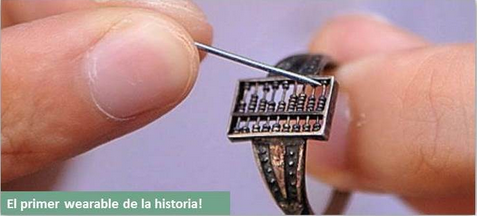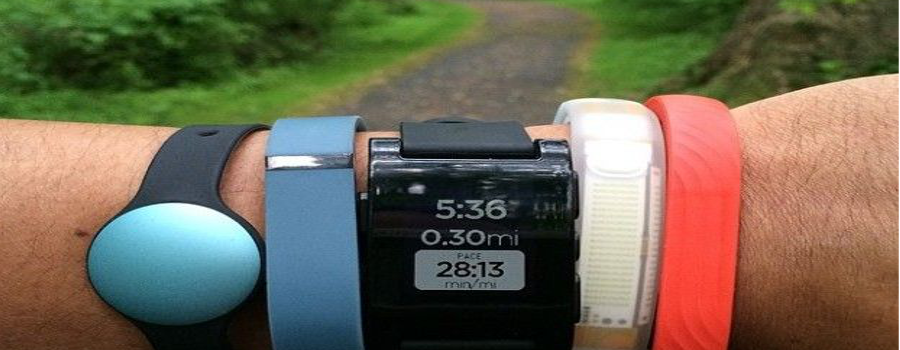The wearables provide us functions such as view the time and do calculations or improve our capabilities. They are nothing new
Already in 1654, the Qing dynasty miniaturized an abacus on a ring. Today it is considered as the first wearable of the history. At the same time they began to use instruments amplifiers sense of sight and hearing, lends and trumpets. More than a century later appear mechanisms like a marine chronometer by Harrison. In the twentieth century, watches or cameras in vests and helmets are manufactured. Anecdotally, in 1961 Edward O. Thorp and Claude Shannon introduced a computer inside a shoe to cheat playing roulette. But, until 1972 we cannot speak about technologic wearables when the first digital clock was invented by Hamilton.
Concerning these last, today the technological hurdle is connect and measure the broadcast signal by the human body with sensors which can be integrate inside devices easy to wear: for instance bracelets, rings, watches, glasses and clothes.

In terms of functionality, it is focus principality to specialize and group the physiological measures and the vital signs in order to control, detect, and caution physical diseases (cardiological, diabetes, epilepsy) and psychic diseases (stress, anxiety, disorientation)
Although in other areas this devices could be interesting, in the health area could began uncomfortable, even stigmatizing. In times where medical records are so high degree of confidentiality and privacy, who yield to wear a watch that brand, shape or signals emitted, it is telling those around me that I am diabetic? Or in the case of several pathologies, do I have to wear a collection of colorful bracelets to measure related vital signs?
This factor may be one of the biggest problems when entering the wearable in everyday life, so to minimize the visual impact and ease of use are two fundamental reasons why the technology trends are towards devices deriving “merge” with the body (second skins, tattoos) and going a little further, that are integrated into the body. If you can wear the wearables inside the body is not strange if we think that the first external pacemaker, was built in 1957 and only a year after the first internal pacemaker was implanted. Today materials susceptible of being rejected by the human body are numerous and research in the medical, biological and technological fields come together every day new sensors and devices.
Another major inconvenience to the final launch of the wearable comes on the heels of the culture of data privacy and the feeling of control. The challenge is to demonstrate the paradox that the more we control the device, more independence have a device capable of detecting a possible attack, a stressful situation or a seizure (all of them are already), give us greater mobility , increase our ability to travel alone activities without fear of a sudden.

Besides offering the possibility of making calls to emergency services, provide enough medication alarms and storing useful information the next checkup time. Therefore, in the coming years it will be crucial to change the concept of “being controlled” by “security” to receive information in time so as to emphasize the visual discretion devices. This will make the wearables are normal in our lives because we already have the knowledge and technology to develop.
- Wearables for women - 21 October 2016
- Did Nikola Tesla open a door to accessibility? (II) - 3 August 2016
- Did Nikola Tesla open a door to accessibility? (I) - 29 July 2016
